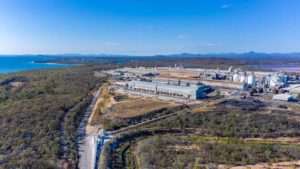
Climate change policy has reached an impasse. The government is committed to its current policy of purchasing emissions, which needs strengthening to meet harder emissions reduction targets beyond 2020.
But the best policy – a price on carbon through emissions trading – looks as far away as ever, in spite of it being favoured by the Labor Party. Strong objections from within the Coalition, in addition to the absence of broad public support when Australia introduced a carbon price in 2012, will make reintroducing carbon pricing – and making it stick – very difficult for some time.
Grattan Institute’s new report, Climate Phoenix: A sustainable Australian climate policy, sets out a roadmap to get past this impasse. The roadmap builds on the Coalition Government’s existing framework, allowing the Coalition to stay committed to its policy. But the roadmap does more than that. It strengthens the policy in a way that gives it real teeth, transforming it into a policy that could be adopted by the Labor party.
Grattan’s proposal is not perfect policy. It is not meant to be. It is pragmatic. If past climate change policy debates have taught us anything, it has been that pursuit of the perfect or near perfect has not produced good results. Emissions are rising again and the transition to a low-carbon economy has hardly begun. The Government’s current emissions reduction policy offers no guarantee it can turn these trends around.
Most importantly, the chopping and changing of policies has left business in the dark, and the chance of it investing in the low-emissions technologies we need seriously diminished.
To provide certainty to business and the community, we need a policy that both parties can support. Only then can Australia’s climate policy become stable and sustainable. The perfect policy is pointless if it is unwound after a couple of years.
What, then, does a pragmatic policy look like? The starting point is the government’s existing policy: the Emissions Reduction Fund (ERF) and its associated Safeguard Mechanism. The Safeguard Mechanism sets limits – or baselines – to the emissions of Australia’s largest-emitters.
The idea, to stop these companies increasing their emissions just as the government is purchasing emissions reductions, is sensible. But the baselines are set too high. The first step the government needs to take is to reduce baselines in line with Australia’s 2030 emission reduction target.
The government would then encourage low-cost emissions reductions through the auctioning of permits to emit. Baselines would be reduced to levels below where they would need to be to meet Australia’s target. Permits – the right to emit one tonne of greenhouse gases – would be auctioned to fill the gap. Such a policy would reduce emissions more cheaply than simply paying companies to emit less.
The final step is to replace baselines with permits and increase the number of businesses covered by the scheme. Baselines would be reduced to zero and all emitters would have to buy permits for their emissions. Australia would then have a policy that could be adjusted to meet the tougher targets that are inevitable in the future.
This approach covers all the largest emitters in Australia, except for electricity generators. In the electricity sector we propose an intensity baseline scheme. Under this scheme, high-emitters such as brown coal plants are penalised – they have to pay for their emissions.
On the other hand, low or no emissions producers, such as renewables, are rewarded – they generate credits which they can sell. An intensity baseline scheme encourages the switch from high to low-emissions generation, which will help the transition to a low-carbon electricity sector without the need for further government intervention. Importantly from a political perspective, an intensity baseline scheme lessens the impact on electricity prices.
If Australia’s main political parties support this roadmap, they must both get started and maintain momentum for the long haul. There are plenty of hurdles to overcome. Rising emissions at present are hardly an endorsement of the Coalition Government’s policy. But Labor will want to avoid any discussion that threatens a rerun of the ‘carbon tax’ debate. Keeping climate change out of the limelight during the upcoming election may actually create a window of opportunity, particularly if both parties can avoid ruling out options.
A large opportunity beckons after the election. Whoever wins, the Government will need a strong and politically saleable climate change policy, ideally supported by the Opposition. Going it alone is not an option. This roadmap provides a way forward that both parties can and should embrace.
David Blowers is Energy Fellow at the Grattan Institute.







